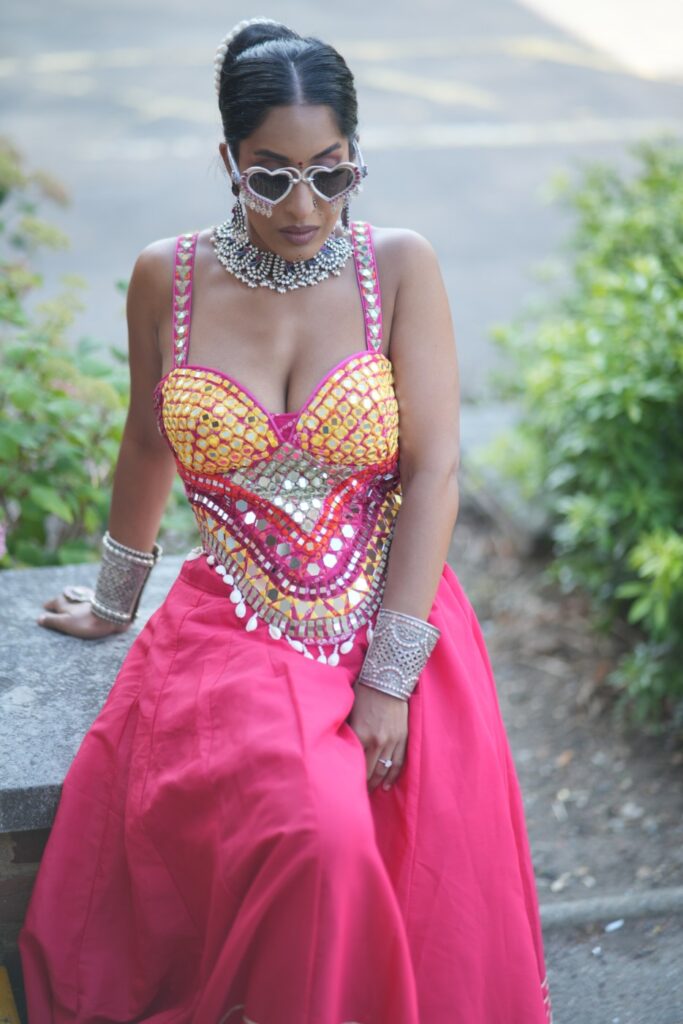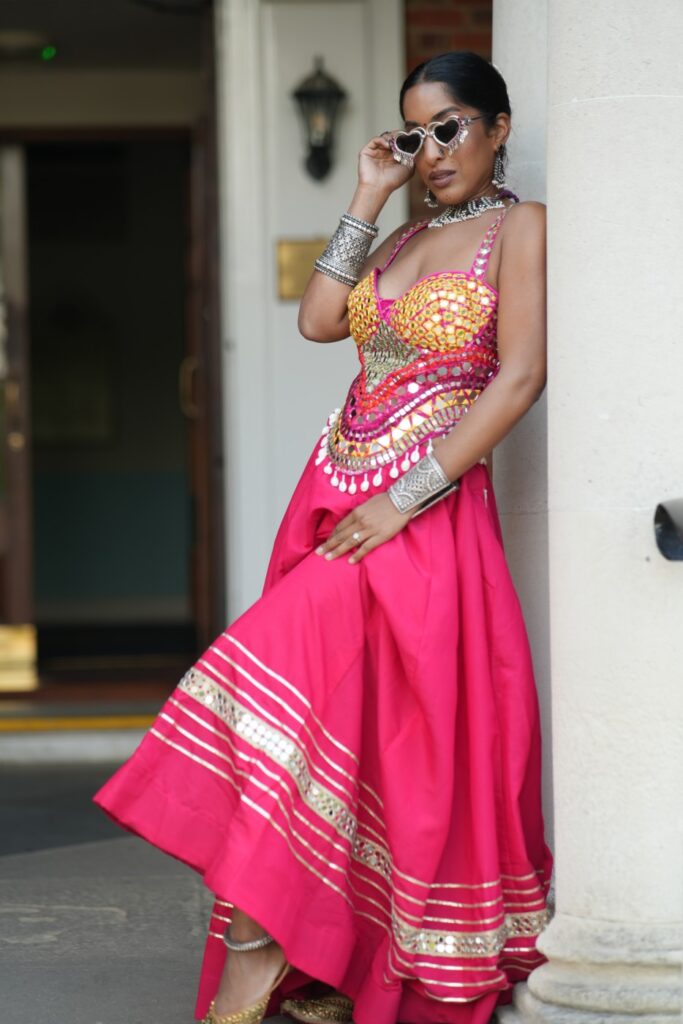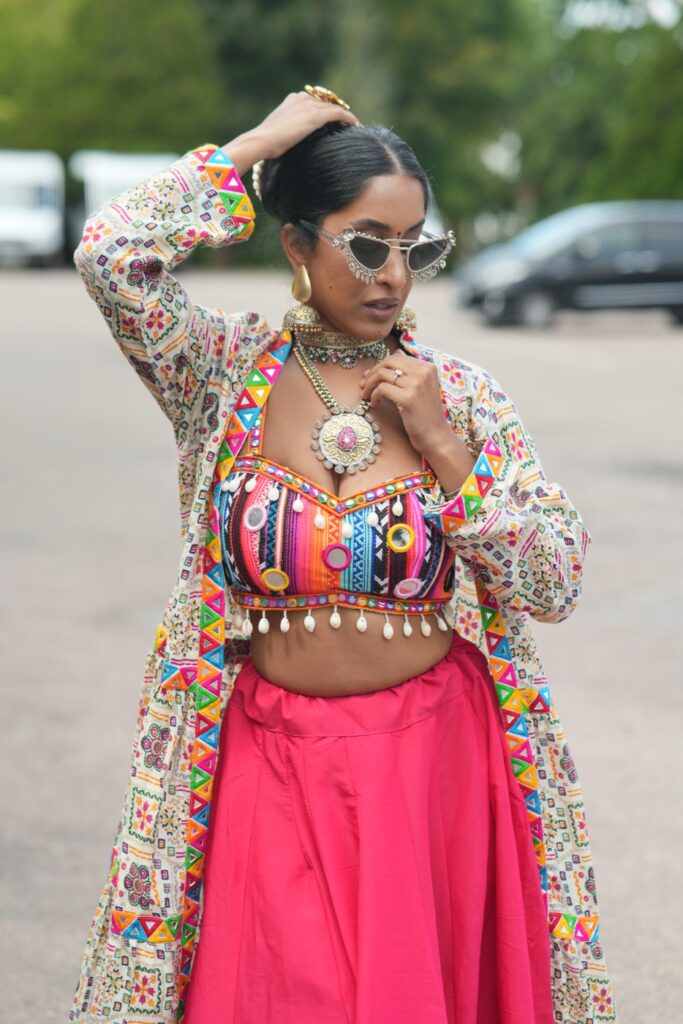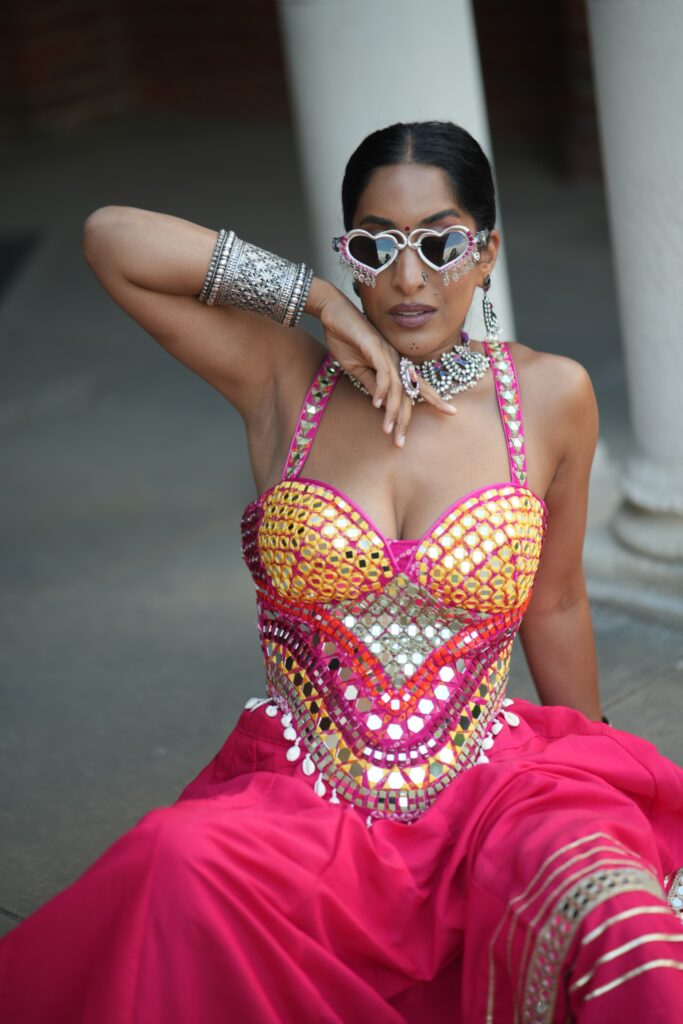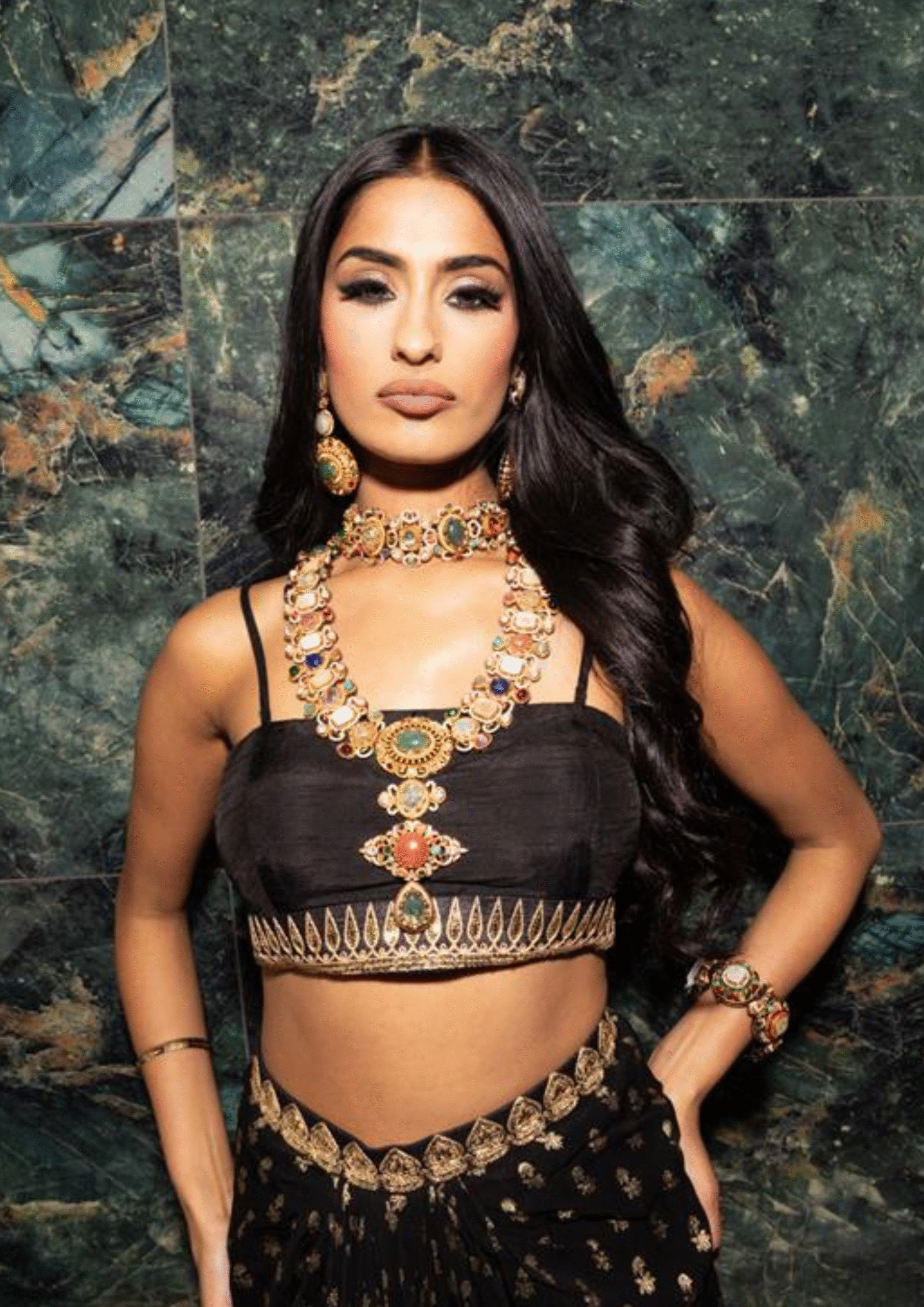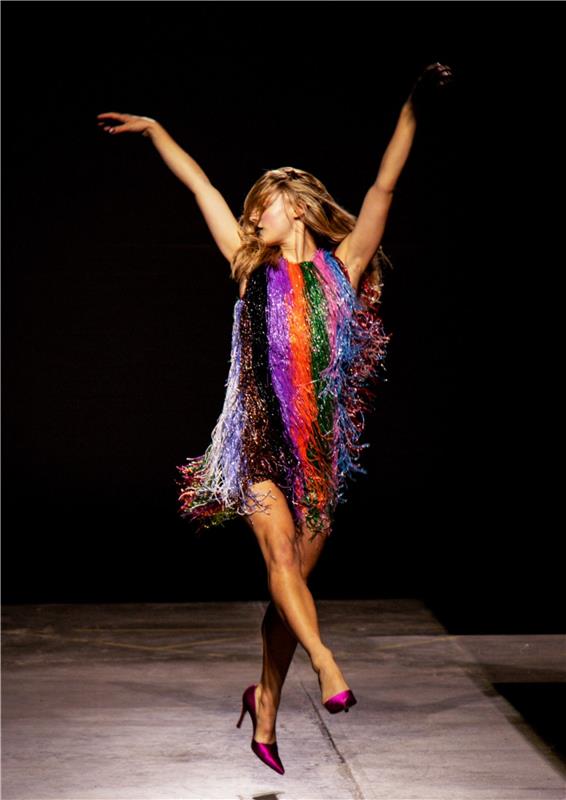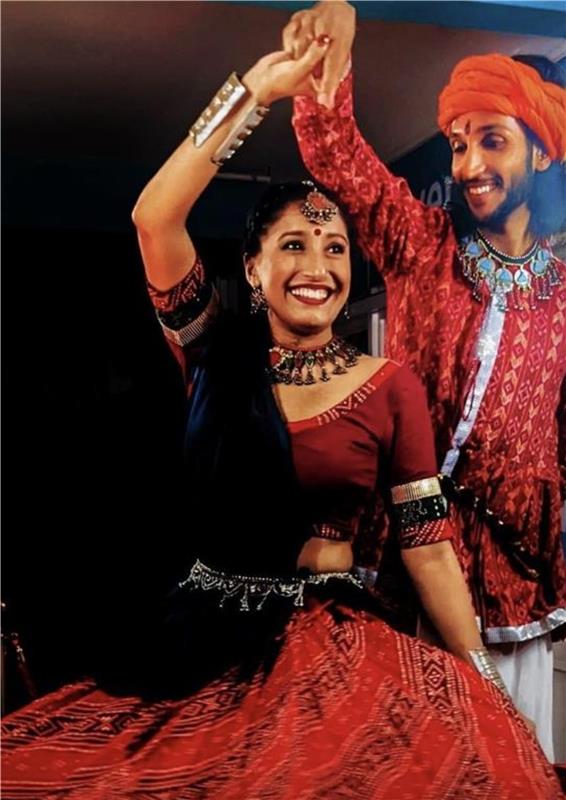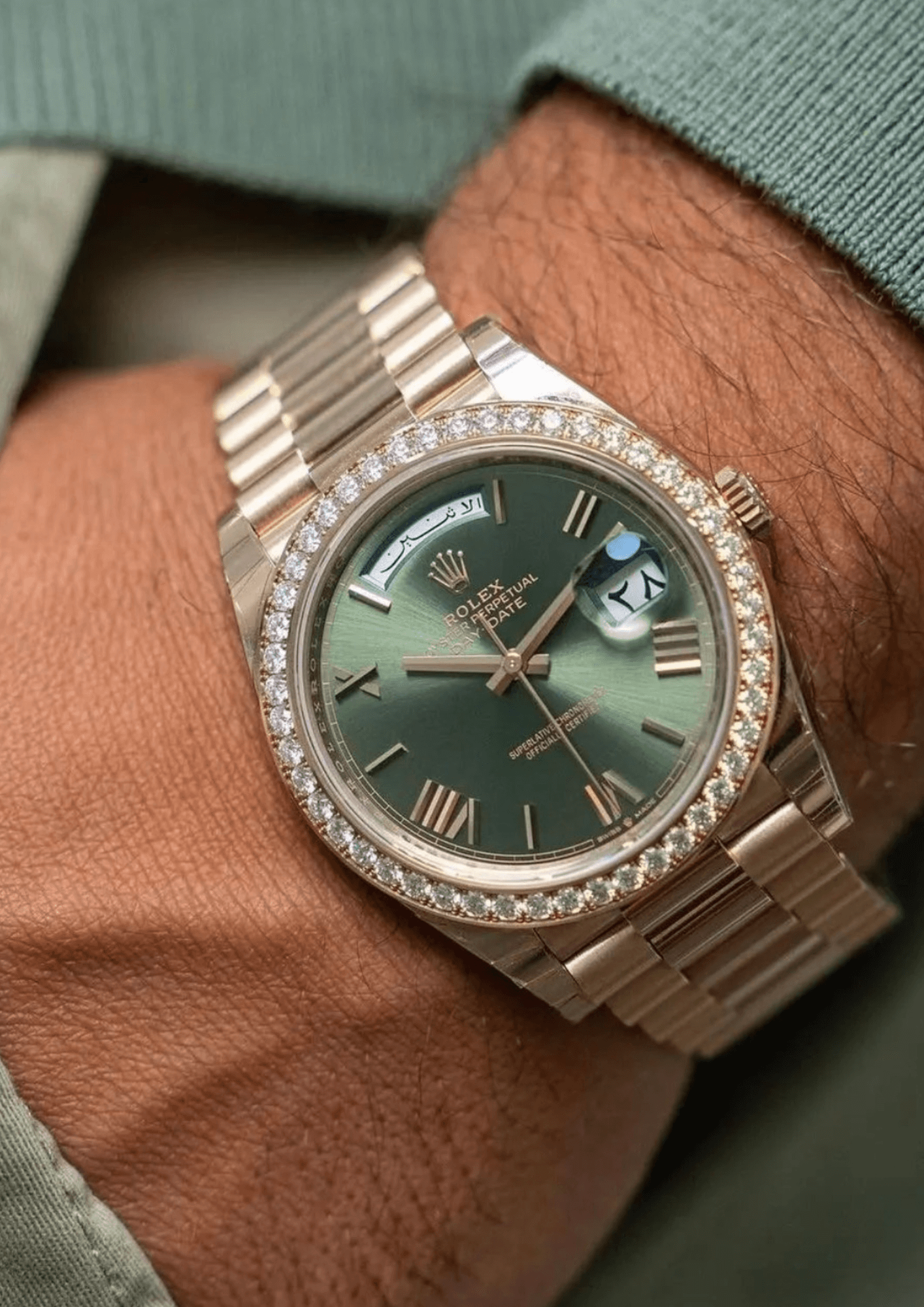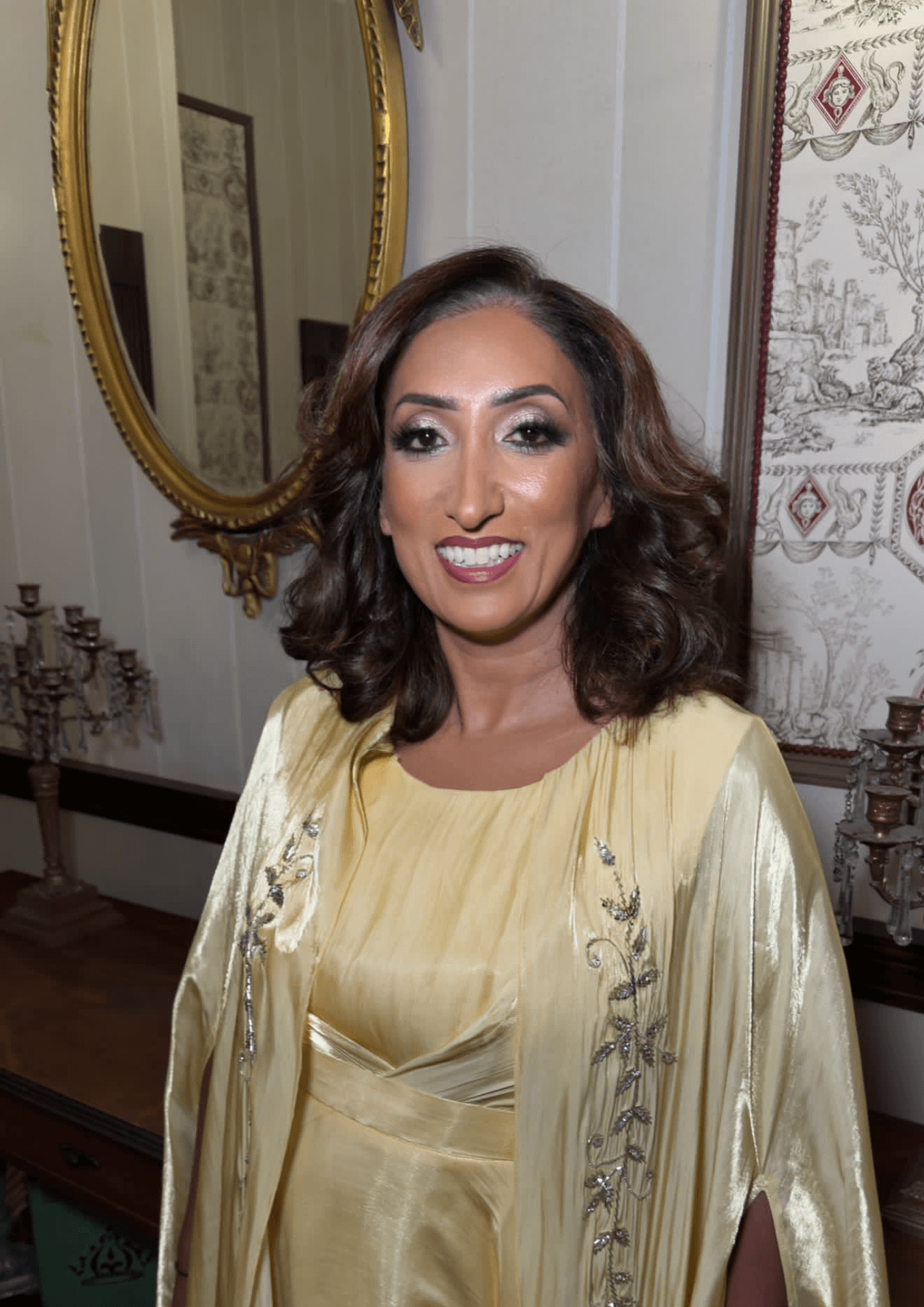In every Navratri, there is a moment. A pause. Before the beat drops, before the circle forms, before the dandiya taps in perfect synchrony. It’s the moment when a woman stands in front of a mirror and decides — not just what she’s going to wear, but who she’s going to be tonight.
For years, that decision was pre-written. Lehenga. Choli. Dupatta. Mirrorwork. Modesty stitched into every seam. Celebration expressed in silhouette — but never too much. Always in service of something else: family, community, perception.
But something is shifting.
This year, in dance halls and temples, in rooftop parties and back gardens, a new shape is entering the circle — fitted, structured, and undeniable. The corset choli, with its tailored defiance and soft provocation, is not just a trend. It’s a quiet revolution in cotton and thread. It’s not shouting — but it’s not whispering either.
And for some, that’s uncomfortable.
Because South Asian femininity, for all its colour and grace, has long been filtered through rules. How much skin is too much? How tight is too tight? Can you be modern and still be good? Can you show desire without being mistaken for rebellion?
The corset choli doesn’t answer these questions — but it asks better ones.
It cinches where you’ve been told to soften. It holds where you’ve been told to hide. And somehow, within its structure, you feel freer. Not because you are less — but because you are finally more yourself.
This is not about exposure. It’s about expression.
It’s not about being seen. It’s about being chosen — by yourself, for yourself.
The irony, of course, is that this silhouette — so often labelled Western — has roots in our own traditions. Look at the sculptures of temple dancers, the ancient bodices carved into stone, the devotional paintings where form and faith are intertwined. The body was once sacred, not shameful. Worshipped, not restricted.
We’ve inherited a colonial modesty, wrapped in cultural expectation, layered with generational silence. But in the stillness of this new Navratri, the silence is breaking. Not with protest. With poise.
With daring grace.
This is what Monalisa Sarees captures with her corset cholis — elegance with a sharp edge. A design language that speaks of heritage without repeating it. Of womanhood without limiting it. Her pieces are neither traditional nor trendy — they are truthful. Measured in fabric, but felt in energy.
And what completes this visual rebellion? Silver — raw, untamed, ancestral.
Alluring Silvers doesn’t decorate the woman. It honours her. In every handcrafted 92.5 piece, there’s a story — of grandmothers who wore payals, of daughters who wore hoops, of women who now wear goddess motifs, tribal chokers, and oversized rings without apology.
Gold has long been seen as the standard of virtue — but silver tells a different story. It doesn’t shout status. It whispers power. And this year, it moves with you — in bangles that echo your every step, in rings that say what words can’t, in sunglasses that frame the gaze you’re no longer lowering.
Because here’s the truth: dressing for Navratri isn’t frivolous.
It’s sacred.
It’s ritual.
It’s a prayer stitched into cotton, a mantra clasped at the wrist. It’s how we ready ourselves to enter the circle — not just of dance, but of identity.
There, under the lights, between the incense and the rhythm, you’ll find women like you. Women who love mirrorwork but not mirrors. Who grew up with two cultures and still don’t fit perfectly into either. Women who were told to be demure but were born to be dazzling.
They’ll wear colour the way some wear courage. They’ll tie their dupattas loose or not at all. They’ll wear corsets with reverence and silver like armour. And in doing so, they’ll remind us that devotion can look different now.
That grace can be daring.
That modesty can be a choice — not a rule.
And that a woman in her power is not a disruption to tradition.
She is tradition. Evolving, expanding, and always — always — returning to herself.
So this Navratri, wear what feels right on your body. Whether it’s flowing or fitted. Loud or minimal. Modest or magnetic. Not to please or provoke, but simply to honour your own becoming.
Because the goddess never asked to be dressed a certain way.
She asked to be recognised.
About the Creators
Monalisa Sarees was born from memory — a saree made for a moment, on a daughter’s birthday, that blossomed into a full-fledged vision. From Gujarat to the UK, the brand has grown into a sanctuary for modern South Asian fashion, where every corset, lehenga, and jacket is stitched with heritage and designed with freedom.
Website: monalisasarees.com Instagram: @monalisasarees
Alluring Silvers emerged from stillness — a pandemic pause turned into a purposeful movement. Their 92.5 silver jewellery celebrates womanhood in all its forms, from tribal roots to goddess motifs, from raw minimalism to luxe statement. This season, they bring Bhavya Ramesh’s striking sunglasses to Europe — the final punctuation to a woman’s expression.
Instagram: @alluring.silvers
Together, these two brands create more than just looks. They create language. For women who dress with devotion — and a little bit of daring.
